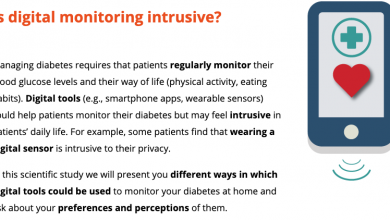CDC Reports Decrease in Trend of New Diabetes Cases During the Last Decade
Diabetes Report Marks Improvements in Overall Diabetes Trends despite Increases in Younger Populations; Ethnic Differences Persist

While the Center for Disease Control & Prevention (CDC) continues the battle against COVID-19, its Division of Diabetes Translation recently released it’s National Diabetes Statistics Report with some unexpected findings: a decreasing trend of newly diagnosed cases of type 2 diabetes in adults in the US during the last 10 years.
Diabetes is referred to as the worst global epidemic — rising from 108 million cases in 1980 to 463 million cases today — it’s expected this number will hit 700 million by the year 2045.
Despite the lower rate of newly diagnosed per thousand people, the percent of the population living with diabetes has not materially changed.

Let’s take a closer look at the stats outlined in this recent report using the Diabetes Altas.
Rates of New Diabetes Cases Vary by Age
The rate of new cases decreased in people over age 65 but increased in younger populations.

It may be that the older population is receiving messages on lifestyle habits but the younger population is not.
The numbers are still high
The CDC’s report shares that just over 1 out of every 10 Americans have diabetes, with a total of approximately 34.2 million people.
And 1 out of every 3 American adults has prediabetes, for a total of 88 million people.
The incidence of type 2 diabetes does vary by ethnic group.

The ethnicities most affected by new cases in the United States are:
- non-Hispanics blacks
- Hispanics
- non-Hispanic Asians
- non-Hispanic whites
The ethnicities with the highest rate of existing cases are:
- American Indians
- Alaskan Natives
Most significant lifestyle factors
The three strongest lifestyle factors in the United States’ type 2 diabetes population are related to weight, exercise, and smoking.
- 89% of the type 2 diabetes population is overweight
- 38% do not exercise regularly
- 15% smoke cigarettes regularly & 21% are tobacco users
Are overweight
There’s no arguing that higher levels of body fat create tremendous insulin resistance, but the goal of losing weight is not an easy accomplishment — especially for those who are over 250 pounds.
In every state across the country, at least 20 percent of the adult population struggles with obesity.
Just under 20 percent of the entire country’s youth struggles with obesity, which amounts to about 13.7 million children.
While it’s important to know that a significant number of people with type 2 diabetes cannot necessarily “reverse” the condition simply by losing weight, the CDC still emphasizes that lifestyle changes (most of which would help a person lose weight) can reduce your risk of type 2 diabetes by 58 percent.
Do Not Exercise
The most obvious benefit of regular exercise for people with diabetes is the eventual weight-loss, but there’s far more to it than that.
For people with diabetes, exercise should be a vital part of daily self-care — even low-impact exercise like walking — because it can significantly decrease your risk of long-term diabetes-related complications.
“People with diabetes are likely to develop blocked arteries (heart disease), which can lead to a heart attack or stroke,” explains research from EndocrineWeb.
“Exercise helps keep your heart healthy and strong. Plus, exercise helps you maintain good cholesterol—and that helps you avoid high cholesterol and the build-up of plaque that may block the blood from passing easily through your arteries.”
Exercise also improves your overall blood flow and circulation which helps manage or prevent complications like neuropathy and retinopathy where cells are dependent on new blood cells and oxygen for their ongoing function and survival.
Forget about the pressure to join a gym or do something wildly intense like Cross Fit. If you currently exercise zero minutes per day, focus on increasing to 20 minutes of walking or other low-impact activity.
Smoke
Smoking cigarettes makes you 30 to 40 percent more likely to develop type 2 diabetes, and actually decreases the effectiveness of the insulin on your blood sugar — whether it’s injected or your body’s own insulin.
The presence of nicotine and overall inflammation created by smoking cigarettes leads to tremendous ongoing insulin resistance. And can persist for up to 48 hours after each cigarette. Since most regular smokers consume nicotine far more than every 48 hours, this means that an increased level of insulin resistance is a constant battle your blood sugar faces.
Research has directly attributed 20% of type 2 diabetes cases in men and 5 percent of cases in women to a habit of smoking cigarettes.
It also significantly increases the development of diabetes complications like neuropathy and retinopathy, increasing your risk of an amputation of a toe, for example, and a decrease or loss of vision.
If you’re working on improving your insulin resistance and overall blood sugar health, quitting cigarettes is one of the top 3 most worthwhile avenues to pursue.
Do I have Prediabetes?
One of the most important things the CDC can do to help prevent the full development of type 2 diabetes and the development of long-term complications (including kidney failure and amputation) is to identify prediabetes and type 2 diabetes earlier.
Take the DoIHavePreDiabetes test and talk to your healthcare team about the National DPP (diabetes prevention program).
The Diabetes Prevention Program is approved by the CDC and participation may be covered by your health insurance program.




